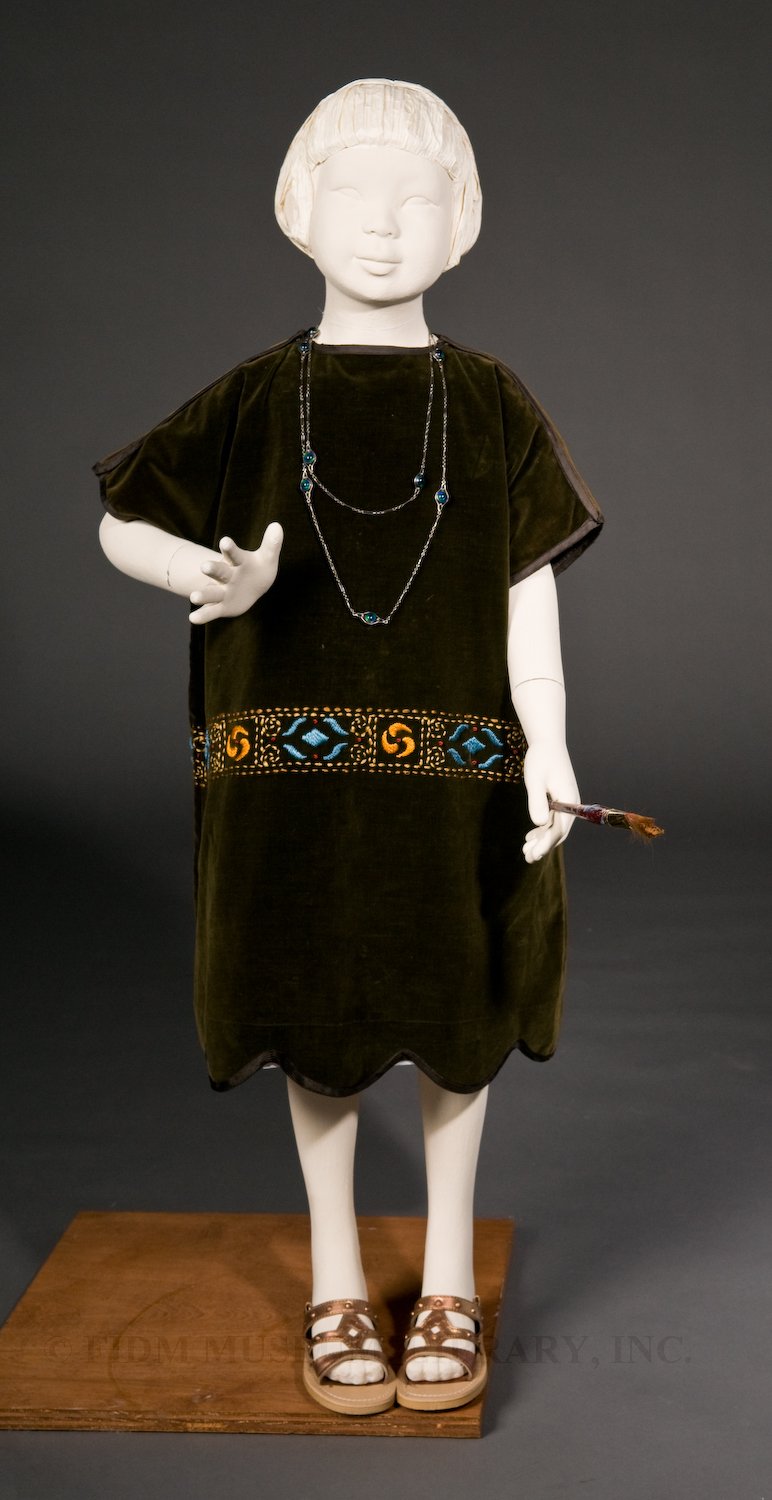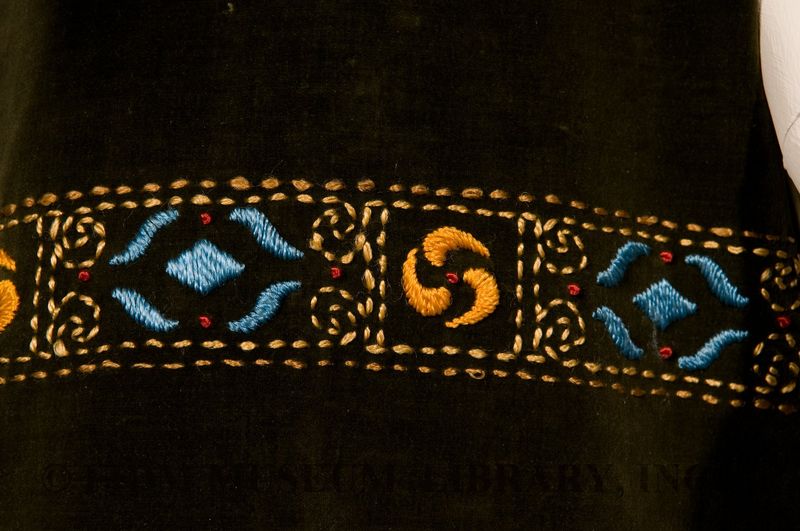Bohemian dress for children
Bohemians were figures of both fascination and fun in the late 19th and early 20th centuries. A typical Bohemian was often artistically or politically inclined and was willing to step outside the bounds of conventional society. The highest Bohemian ideal was to be true to one's own inner passions, regardless of societal or economic pressures. This interest in nonconformity led Bohemian dressers to a variety of innovative dress styles: non-Western garments, comfortable work or sport clothes, and costumes born of their own imaginations. Long associated with working artists, the "art smock" attained special prominence in notoriously Bohemian Greenwich Village during the late teens. The loose, unstructured fit marked its wearer as a woman willing to reject the boundaries of fashion and propriety in the pursuit of an "artistic" life. A woman who was willing to wear such a free and easy garment was assumed to adhere to ideals of personal, social and sexual liberation. Smocks could be purchased in several Greenwich Village boutiques, including the Village Store and from the studio of batik artist Alice Muth. The 1922 Greenwich Village guidebook by Anna Alice Chapin noted that it was common to see "girls in smocks of 'artistic' shades-bilious yellow-green, or magenta-tending violet" when visiting the area.
 Smock dress c. 1913-15 FIDM Museum Purchase 2007.5.25
Smock dress c. 1913-15 FIDM Museum Purchase 2007.5.25
Among Bohemians, children were often an anomaly, due to a lack of interest in traditional institutions such as marriage and childrearing. Of course, those who had children expected them to behave with typical Bohemian gusto and dressed them in an appropriately liberated fashion. The loose fit of this scaled-down smock dress complemented the active nature of childhood, while also demonstrating the liberated ideals of nonconformist parents. As noted by a Greenwich Village elementary school teacher in 1919, children of Bohemians could be identified by their clothing, which often featured both orange and green. Dark green velveteen with orange, blue and red embroidery, this girl's smock dress is a case in point. This same teacher also declared that "Bohemians' children have a free-and-easy way of throwing their pencils and do not go to Sunday school."1
1 Lowry, Helen Bullitt. "Medical Diagnosis of the True Greenwich Villager." New York Times 21 Dec. 1919: 45.
